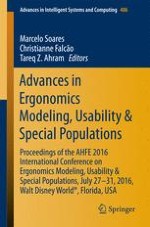2017 | OriginalPaper | Chapter
Experimental Study on Thermal Comfort of Indoor Environment
Authors : Huimin Hu, Rui Wang, Chaoyi Zhao, Hong Luo, Li Ding, Yifen Qiu
Published in: Advances in Ergonomics Modeling, Usability & Special Populations
Publisher: Springer International Publishing
Activate our intelligent search to find suitable subject content or patents.
Select sections of text to find matching patents with Artificial Intelligence. powered by
Select sections of text to find additional relevant content using AI-assisted search. powered by
